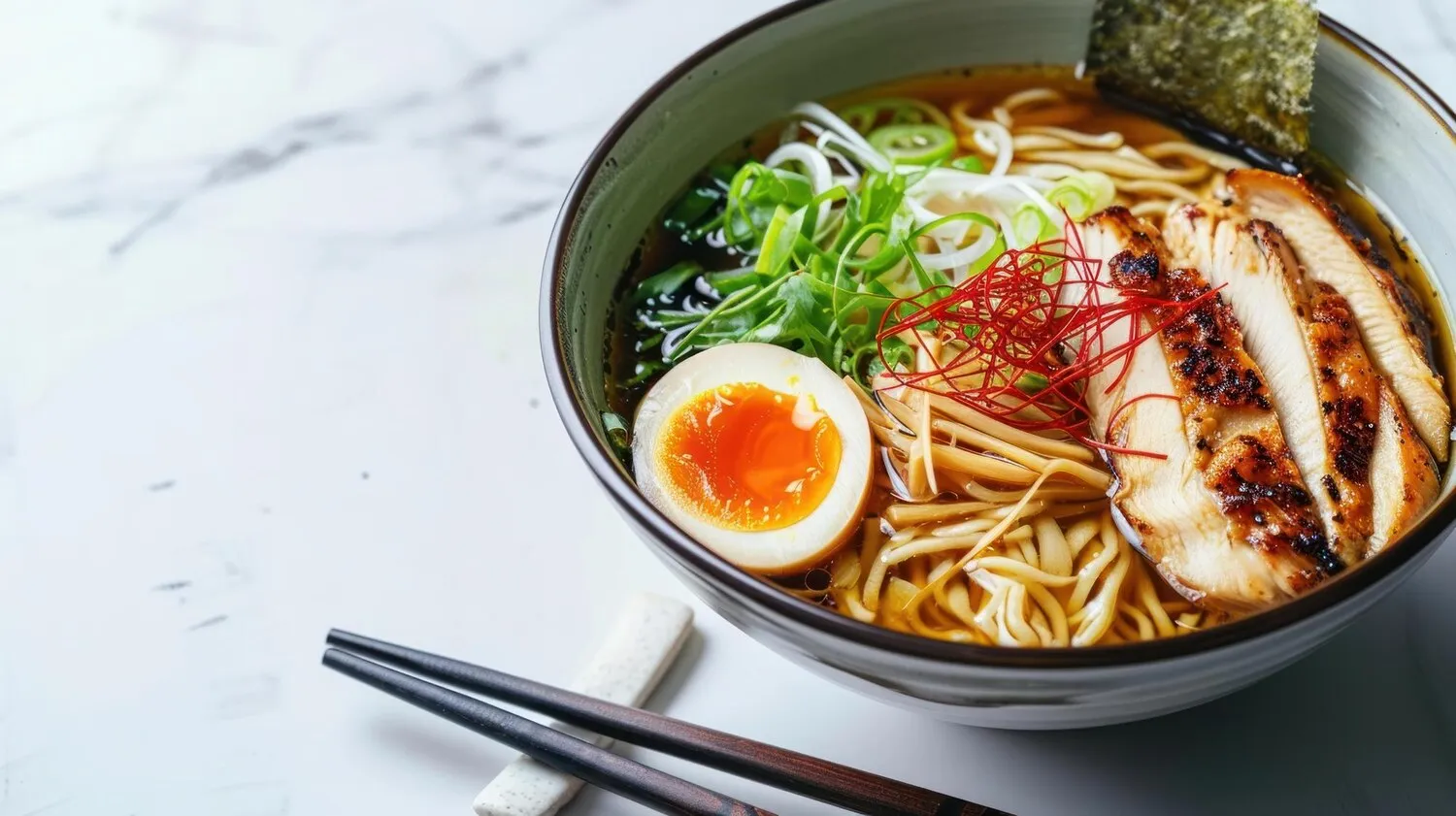
Lamen
Japanese noodle soup with wheat noodles in a broth with meat or fish.
Nutrition Facts
* The % Daily Value (DV) tells you how much a nutrient in a serving of food contributes to a daily diet. 2,000 calories a day is used for general nutrition advice.
Ramen's origins trace back to China, with wheat noodles brought to Japan, likely in the late 19th or early 20th century. It gained popularity in Japan after World War II, becoming a staple food and evolving into regional variations.
Ramen is deeply ingrained in Japanese food culture, representing a quick, affordable, and satisfying meal. Ramen shops (ramen-ya) are ubiquitous, ranging from humble stalls to upscale establishments, each with its own unique recipe and style.
Ramen as a Symbol of Japanese Cuisine
Ramen's global popularity has made it a significant ambassador of Japanese cuisine. It showcases Japan's ability to adapt and refine foreign influences into something uniquely its own.
The Ramen Experience
Eating ramen is often a social experience, with diners slurping noodles to fully appreciate the flavors and aroma. It's perfectly acceptable, even encouraged, to make noise while eating ramen.
Regional Variations and Ramen Tourism
Each region in Japan boasts its own distinctive ramen style, attracting food enthusiasts to explore and sample local specialties. Ramen tourism is a popular way to experience the culinary diversity of Japan.
Ramen offers a complex and savory flavor profile, primarily driven by the interplay between the broth, noodles, and toppings. Umami is a key element, derived from ingredients like pork bones, dried fish, and seaweed.
The broth's base profoundly influences the overall flavor, categorized into types like shoyu (soy sauce), shio (salt), miso (fermented soybean paste), and tonkotsu (pork bone). Noodles vary in thickness, shape, and texture, impacting the broth's absorption and mouthfeel. Common toppings add layers of flavor: chashu (braised pork belly), ajitsuke tamago (marinated soft-boiled egg), menma (fermented bamboo shoots), nori (dried seaweed), negi (scallions), and mayu (black garlic oil) are staples. Regional variations often introduce distinct ingredients and flavors, such as Hakata ramen's creamy tonkotsu broth and thin noodles, or Sapporo ramen's miso-based broth with butter and corn.
Customizing Your Order
Many ramen shops allow you to customize your order, specifying the noodle firmness (kata, futsuu, yawa), broth richness (koime, futsuu, usume), and amount of toppings.
Slurping is Encouraged
Slurping not only enhances the flavor by aerating the noodles but also helps cool them down. Don't be afraid to slurp!
Eating Quickly
Ramen is best enjoyed hot, so try to eat it relatively quickly to prevent the noodles from becoming soggy.
Kaedama (Noodle Refill)
Some ramen shops, particularly those serving Hakata ramen, offer kaedama, a noodle refill, allowing you to enjoy the remaining broth with a fresh portion of noodles.
Explore additional Noodle soup dishes and restaurants
Explore Noodle soupDiscover top dining spots and culinary experiences in Maringá.
Explore MaringáLearn more about the food culture, restaurant scene, and culinary heritage of Brazil.
Explore Brazil